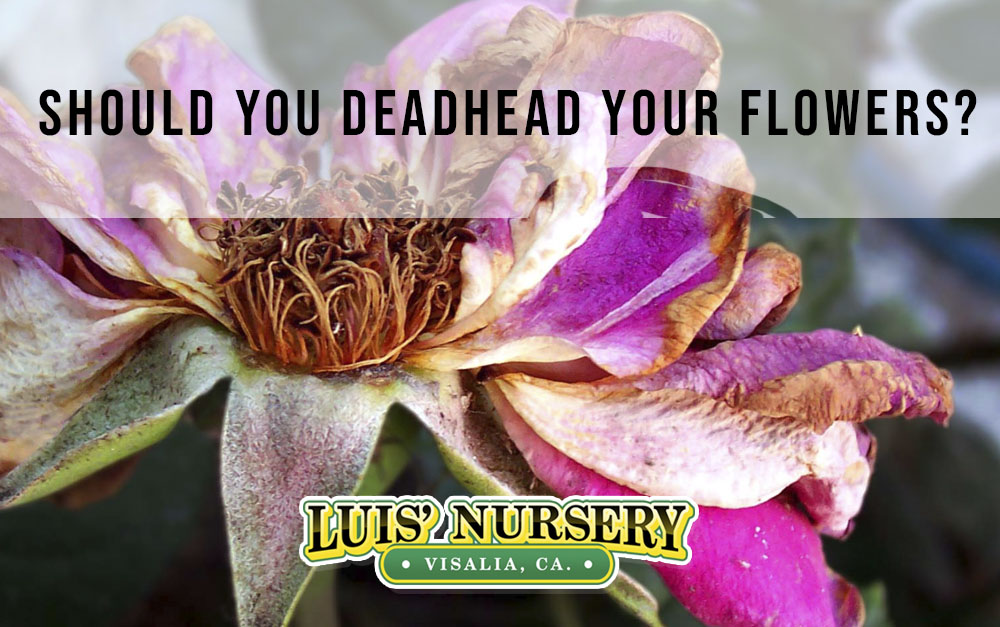First of all, what is deadheading anyway? It sounds like a heavy metal band name out of the 90’s, but it’s an actual gardening term. Deadheading a plant is when you cut off the flowers of the plant which are dead or dying. The sure sign of a dead or dying flower is a wilted, color faded, bloom. It may have even lost its petals.
So, why deadhead?
Is this really necessary and how do you do it? This one simple skill can prolong the life of your plants and encourage more growth. This is a not-so-secret way to keep your flowers looking fresh all summer long. The best thing about it, is that it’s not complicated at all. One simple task of pinching dead blooms leads to many benefits.
One of the first benefits is that it encourages continued blooming. Removing dead flowers from the plant leaves space for new flowers to bloom and lets them know it’s their time to produce and shine. This helps the flowers to continually bloom, which is of course our goal.
Deadheading also helps prevent flowers from going to seed. If you’re trying to keep your small garden contained, you probably don’t want your vegetables going to seed! Once they go to see the plants begin to bolt, and pretty soon you’re going to have to come up with lots of new recipes for all that extra produce. Certain varieties of plants will crowd themselves out, and cause issues. Deadheading will help prevent too much seed from forming.
We all love vibrant, colorful gardens. When you deadhead your flowers and remove the wilted, discolored ones, it leaves room for the plant to produce brilliant new blooms. Usually, these blooms last longer the second time around.
Some plants that produce gorgeous second blooms are Cosmos, Roses and Petunias. Keep in mind, that not all plants will produce a second bloom, but the ones that do, will be worth the simple task. Your plant will be healthier, because they can focus the energy you saved them into producing rich foliage and quality root systems.
When should you not deadhead?
Not every plant will benefit from deadheading, nor needs it. Plants that produce for long periods of time and do not self-seed, don’t need to be deadheaded. Some plants go dormant for the winter, and deadheading would be detrimental to their health if they feel they need to keep flowering past their prime.
So, how exactly do you deadhead anyway?
There are three simple methods to deadhead your plants. Your first option is to pinch. It’s as simple as it sounds. Remember when grandpa used to ‘steal your nose’ by pinching it? Use that same pinch method to pinch off the dead bloom from the stem of the plant, plucking it away. A second option is pruning. You can use pruning shears to cut below the dead flower on the stem. Some plants are a little tougher to pinch, so pruning might be faster. The third option is to cut back the plant. If you have loppers you can cut the whole plant back to the stems. This is helpful if you have entire branches of dead blooms. Try and avoid cutting off new blooms in this process.
Deadheading is a great way to keep your garden looking fresh and vibrant all summer long. Make sure you know your flowers and which ones will benefit from deadheading and which to leave alone. Start deadheading early in the season and do it often to avoid overwhelm. If you have any questions about deadheading or which plants would benefit, we would be happy to help!



